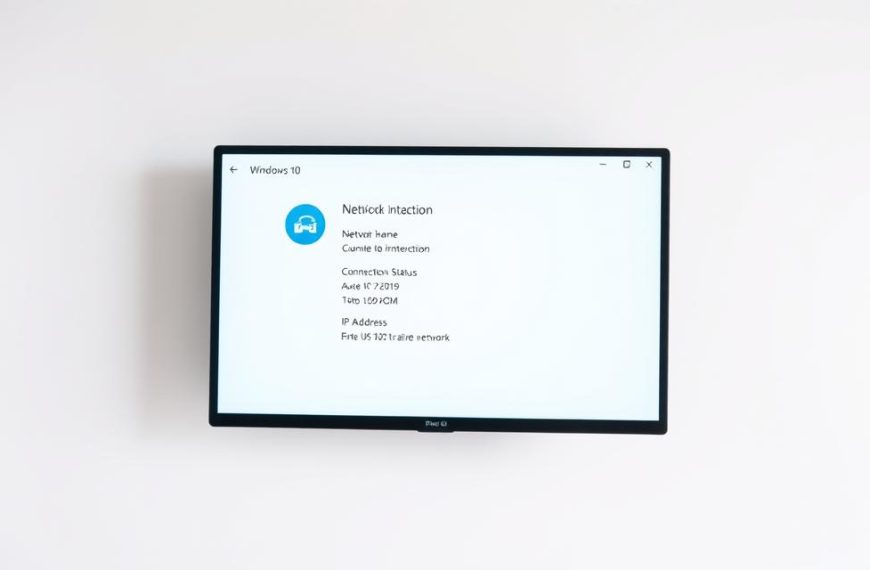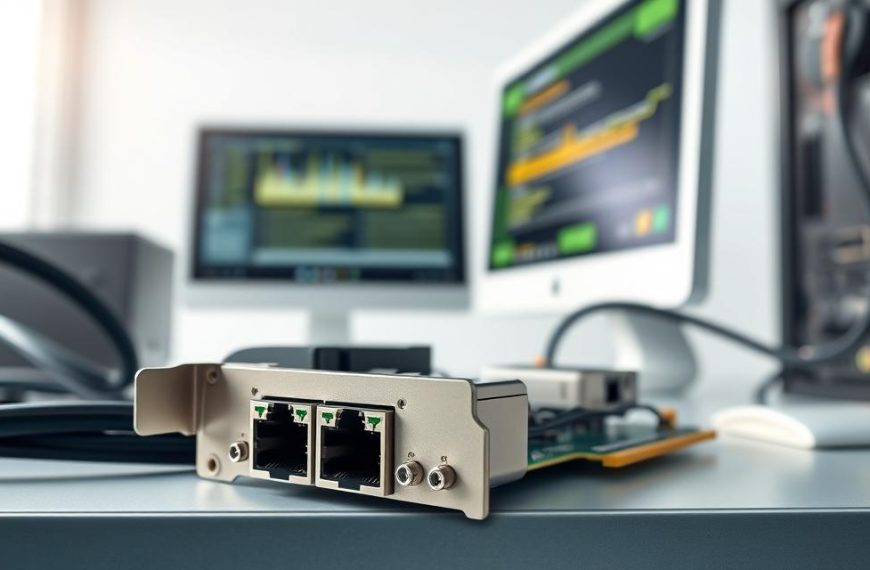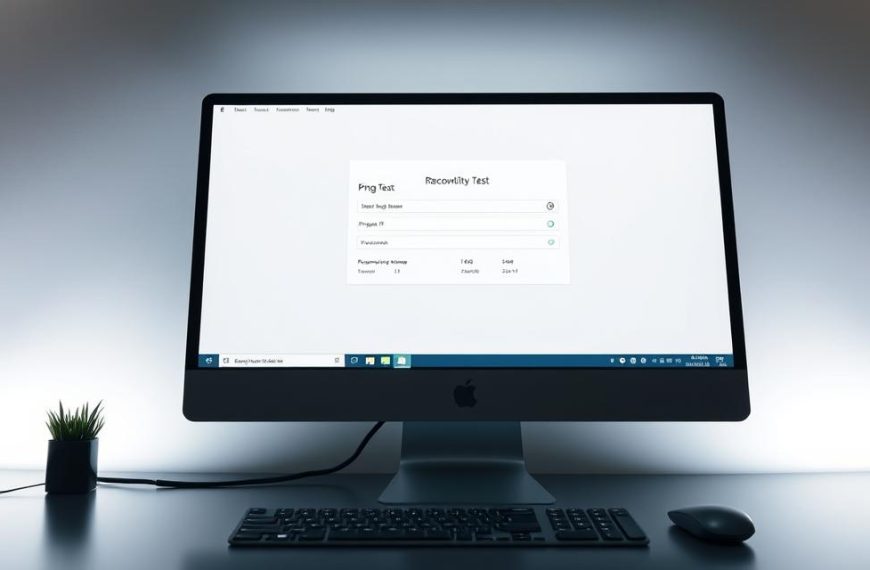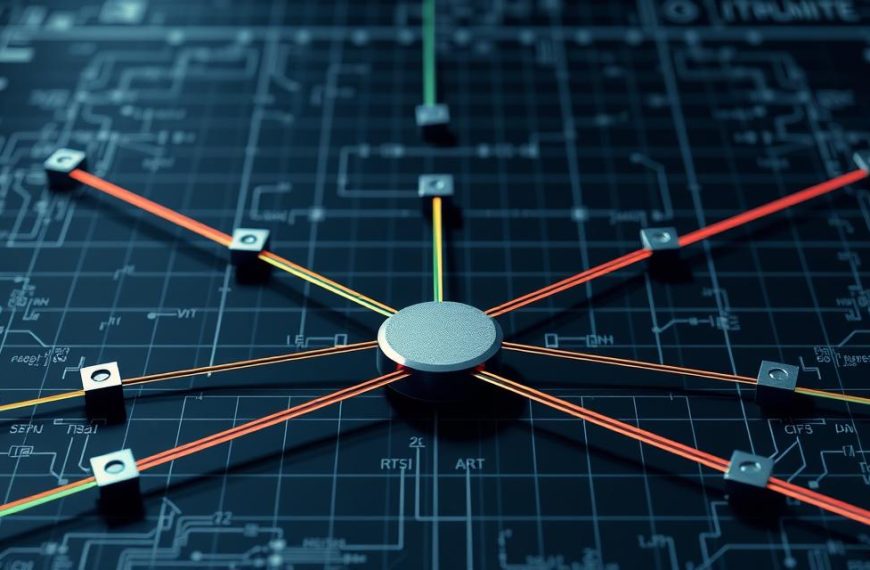Modern digital communication relies on a key framework. This server client model is at the heart of most network interactions today.
The architecture splits tasks between servers and clients. Servers hold resources, while clients use them. This makes the system efficient.
This setup is key for web browsing, email, and business operations. Knowing this relationship helps us understand network computing today.
The model’s design makes networks scalable and strong. It supports smooth communication worldwide.
What is Server and Client in Computer Network?
Every computer network has two key parts: servers and clients. These parts work together to share information and services. Knowing what each does helps us understand how networks work today.
Defining the Server
A server is a computer that gives out resources, apps, or data when asked. It runs all the time, ready to help other devices. This makes sure things keep working smoothly.
What makes a server different from a regular computer?
- Enhanced processing power to handle many requests at once
- Substantial storage capacity for big data and apps
- High reliability components for non-stop use
- Advanced security features to keep data safe
Servers come in all sizes, from huge data centres to small units. Their main job is to get, process, and send back client requests quickly.
Defining the Client
A client is a device that asks for and uses resources from servers. It turns data into something useful for users. Clients start conversations and only work when needed.
There are many types of clients today:
- Desktops and laptops using network resources
- Smartphones and tablets accessing services
- IoT devices getting updates
- Specialised terminals needing central processing
“The client-server model is simple. It uses dedicated resources for different needs through standard communication.”
Client devices are both hardware and software. The device itself makes the request, but apps like browsers or email programs talk to servers.
| Characteristic | Server | Client |
|---|---|---|
| Primary Function | Resource provision | Service consumption |
| Operation Mode | Always available | On-demand usage |
| Processing Power | High capacity | Variable capacity |
| Typical Form Factor | Rack-mounted units | Personal devices |
| Initiation Role | Responds to requests | Initiates requests |
Servers and clients work together well. Servers handle big tasks, and clients make things easy to use. This setup helps networks grow and stay fast, no matter what they’re doing.
The Fundamental Roles of Servers and Clients
Network architecture is built on the unique tasks of servers and client devices. This setup makes systems efficient by centralising resources. It shows how modern computing works smoothly.
Server Roles: Providing Resources and Services
Servers play key server roles in sharing and managing resources. They store data, apps, and services for many users at once. This way, resources are used well across the network.
They keep data safe with backups and security. Servers also control who can use what resources. They work hard to keep services running without breaks.
Service provision covers many server jobs. These include storing files, hosting websites, managing databases, and more. Each server type is set up for specific tasks and keeps security tight.
Client Roles: Requesting and Utilising Services
Client devices have client functions that focus on using services. They send requests to servers for resources or services. This lets clients use powerful resources without needing to install them locally.
Clients send specific requests using the right protocols and passwords. They then make sense of the server’s answers and show them to users in an easy way. This is a main job of clients.
Clients don’t share their resources like servers do. Instead, they focus on making things easy for users and using remote services well. This makes devices light and able to access strong remote resources when needed.
The link between servers providing and clients using resources makes networks work well. Servers manage resources, and clients handle user needs and requests. This setup helps systems grow and support lots of users at once.
How Servers and Clients Interact in a Network
Network communication between servers and clients is a complex yet standardised process. It’s the foundation of modern digital communications. It allows us to browse the web and transfer files across the globe.
The interaction relies on precise timing and structured messaging. Both sides must follow established rules for successful data transmission and service delivery.
The Request-Response Model
The request-response model is the core of server-client interactions. Clients start by sending requests for resources or services.
Servers then process these requests and send back responses. This ensures organised communication, with clients leading and servers responding.
Each exchange has a complete cycle from start to finish. Error handling keeps the communication stable when requests fail or hit network issues.
Session management allows for multiple exchanges in sustained connections. This makes communication more efficient and reliable.
Protocols Facilitating Communication
Network protocols set the rules for successful server-client communication. They define message formats, transmission methods, and error handling.
Various protocols serve different purposes in different networking environments. Organisations choose protocols based on their communication needs and security requirements.
Hypertext Transfer Protocol (HTTP)
The HTTP protocol is key for web communications. It’s a stateless protocol with standard request methods like GET, POST, and PUT.
HTTP uses port 80 for standard communications and port 443 for secure HTTPS connections. Web browsers act as clients, while web servers handle incoming requests.
Modern HTTP supports persistent connections and pipelining for better performance. It keeps evolving to meet web security demands.
File Transfer Protocol (FTP)
The FTP protocol is for file transfers between systems. It sets up separate control and data connections for efficient transfers.
FTP uses port 21 for control commands and dynamic ports for data transfers. It supports active and passive transfer modes.
Organisations often use FTP for large file transfers and website maintenance. Secure variants like SFTP and FTPS offer better protection for sensitive data transfers.
Both protocols show how specific network protocols enable different server-client interactions. Knowing their unique features helps professionals choose the right solutions for their networking needs.
Types of Servers and Their Specific Functions
Networks use server types for different tasks. Each type has its own role. Together, they help organisations work smoothly online.
Web Servers
Web servers are key to the internet. They handle requests and send web pages to users. They deal with HTTP requests and send back HTML, images, or other web content.
Web servers need to work well under pressure. They use caching and load balancing to handle lots of traffic. They also have security to keep data safe.
Example: Apache HTTP Server
Apache HTTP Server is very popular worldwide. It works on many operating systems and can be customised. It supports encryption, compression, and more through modules.
“Apache’s flexibility and robustness have made it the foundation for countless web applications across diverse industries.”
Apache’s setup files let admins control how it works. It can host many websites from one server.
File Servers
File servers manage storage in networks. They help keep data in order and make it easy to share. They handle document versions and backups.
They keep data safe with user checks. They also track who accesses and changes files.
Example: Windows Server File Services
Windows Server File Services is great for big storage needs. It works with Active Directory for easy user management. It has features for file replication and quota management.
It protects data well. It keeps old versions of files and encrypts sensitive info.
Database Servers
Database servers handle data storage and use. They process SQL commands from apps. They keep data consistent and safe.
They improve performance with caching and indexing. They also check data for errors and consistency.
Example: MySQL Server
MySQL Server is a top choice for storing structured data. It’s open-source and supports SQL. It’s flexible and works on many platforms.
It helps distribute data across servers. It also keeps data safe with user controls and encryption.
| Server Type | Primary Function | Key Features | Typical Deployment |
|---|---|---|---|
| Web Server | Content delivery | HTTP processing, caching | Internet-facing systems |
| File Server | Storage management | Access control, replication | Internal networks |
| Database Server | Data management | Query processing, transactions | Application backends |
Each server type meets specific needs. They work together in networks. Knowing about them helps admins build efficient systems.
Common Client Applications and Their Uses
Client software is key in making server communications work. It turns complex server talks into easy-to-use experiences on many devices.
Web Browsers as Clients
Web browsers are a big part of today’s tech. They take content from servers and show it to us as web pages.
They do lots of things for us. They manage our sessions, save files, and run scripts. They also keep our data safe with security checks.
Browsers can do more than just HTTP. They support WebSocket for live chats and secure file sharing.
Mozilla Firefox is a top example of a browser. It uses the Gecko engine to handle HTML, CSS, and JavaScript from servers.
Firefox is built to be safe and stable. It uses different processes for each tab, so one tab won’t crash the whole thing.
It also has strong privacy tools. These help keep your browsing safe and your passwords secure.
Users can add extensions to Firefox. These can change how content is shown or add new server features.
Email Clients
Email clients help us manage our emails. They talk to mail servers using IMAP, POP3, and SMTP.
They let us read emails offline. They also keep our data in sync with the server.
Good email clients do more than just emails. They handle calendars, contacts, and tasks through server talks.
Example: Apple Mail
Apple Mail is a top email client for Apple devices. It supports many account types with standard protocols.
Its unified inbox feature brings together emails from different servers. This lets users manage all their emails in one place.
It has smart tools for sorting emails. Smart mailboxes sort messages based on what you want.
Apple Mail works well with other apps. It lets you share content easily between services and apps.
It also keeps your emails safe. It encrypts messages and checks digital signatures for security.
The Importance of Server-Client Relationships in Modern Computing
The server-client architecture is key to today’s digital world. It powers our connected lives with advanced computing. This setup is more than just sharing resources. It creates systems that grow and stay efficient.
Enabling Distributed Systems
Distributed systems are a big leap in computing, thanks to strong server-client ties. They let many computers work together as one system. This makes them seem like a single, unified system to users.
This setup brings many benefits:
- Resource sharing across different places
- Smart load distribution among servers
- More reliability with extra parts
- Better performance through parallel work
Any computer can get better by using resources from others. This makes a flexible system that grows with demand. It keeps service quality steady.
Supporting Scalability and Efficiency
The server-client model makes networks grow easily. It lets companies expand their online services without big changes. This growth is seen in several key areas:
| Aspect of Scalability | Client-Server Benefit | Impact on Operations |
|---|---|---|
| User Base Growth | Horizontal scaling capabilities | Supports millions of users at once |
| Data Volume Increase | Distributed storage solutions | Handles huge amounts of data well |
| Service Evolution | Modular architecture | Makes adding new features easy |
| Geographic Expansion | Content delivery networks | Reduces delay for users worldwide |
Computing gets more efficient with smart resource use. Servers handle specific tasks, while clients manage user interfaces and local tasks. This cuts down on unnecessary work and network jams.
This setup saves costs and boosts performance. Businesses can do more with less, and stay ready for growth.
This partnership has helped internet services and business computing grow. From cloud services to tools for instant collaboration, the server-client model keeps pushing boundaries. It ensures reliability and top-notch performance.
Conclusion
The server-client model is key to today’s digital world. It helps share resources and communicate efficiently. This model is vital for many applications, making computing environments work well.
For example, when you use a web browser, it connects to an Apache server. Email clients also link up with mail servers. These connections are essential for the internet to work.
This model’s design makes services scalable and reliable. It supports everything from small networks to big cloud platforms. As technology grows, the server-client model stays important.
It supports new ideas and keeps communication structured. This is what makes modern network computing work.


















